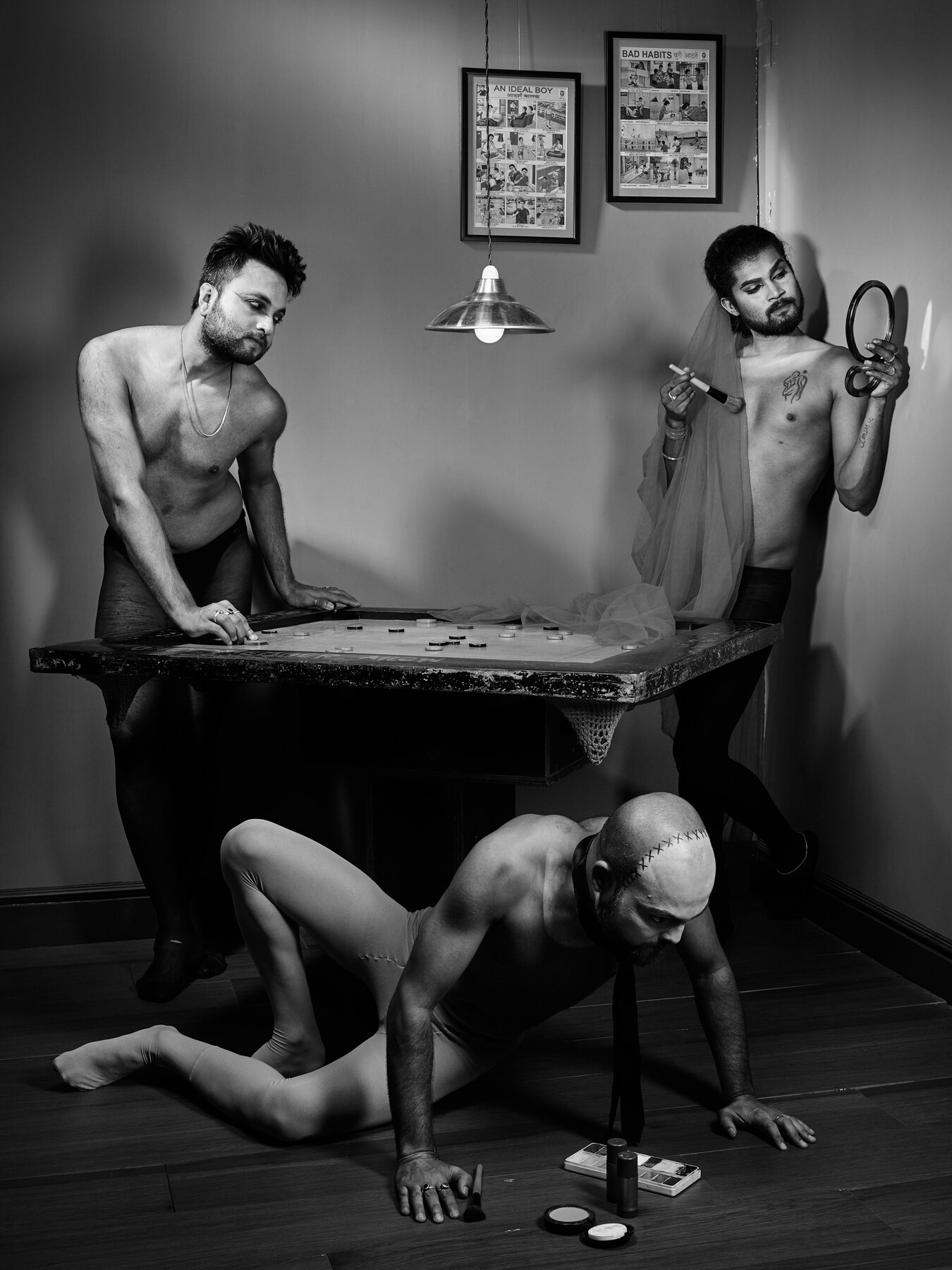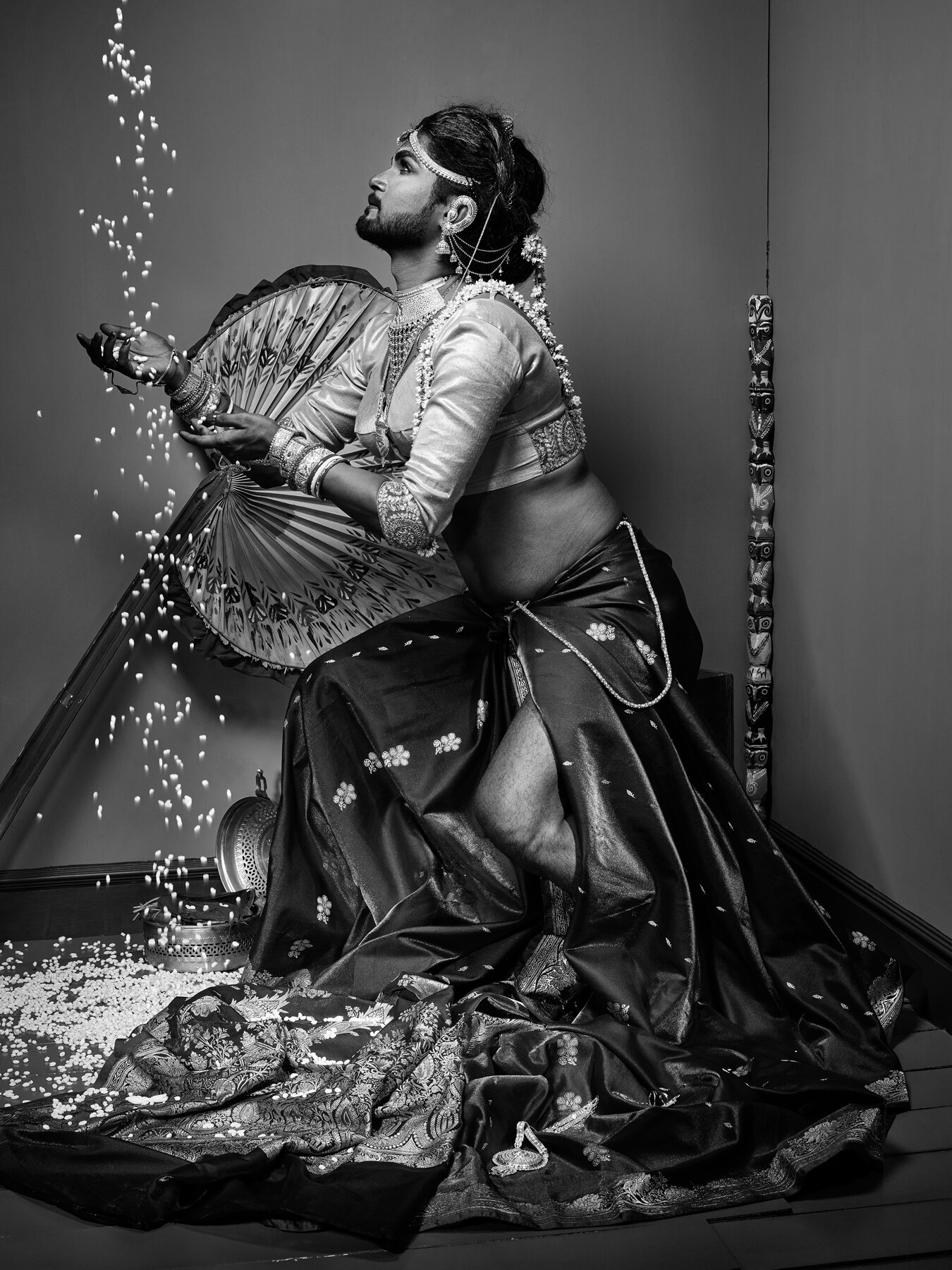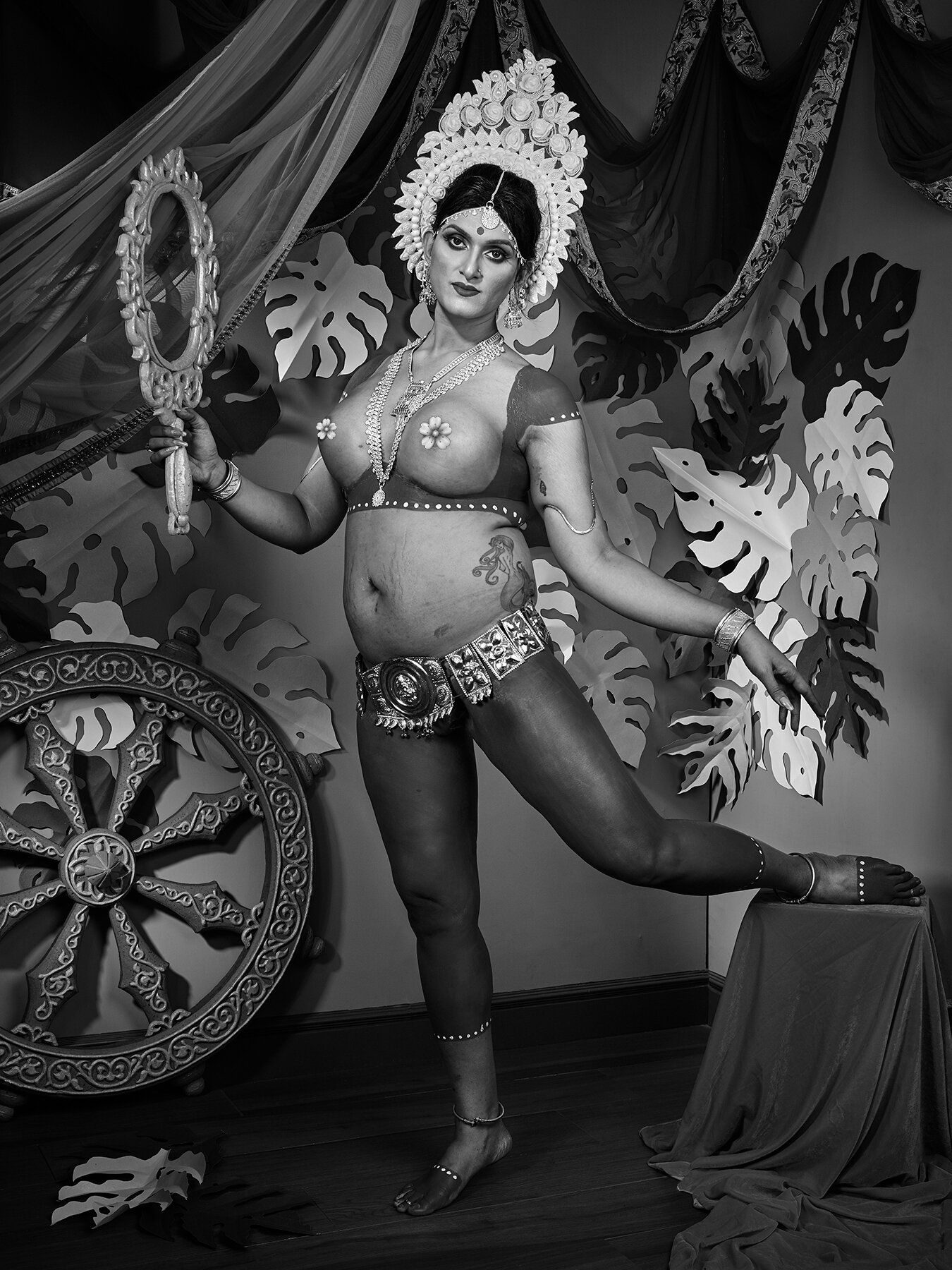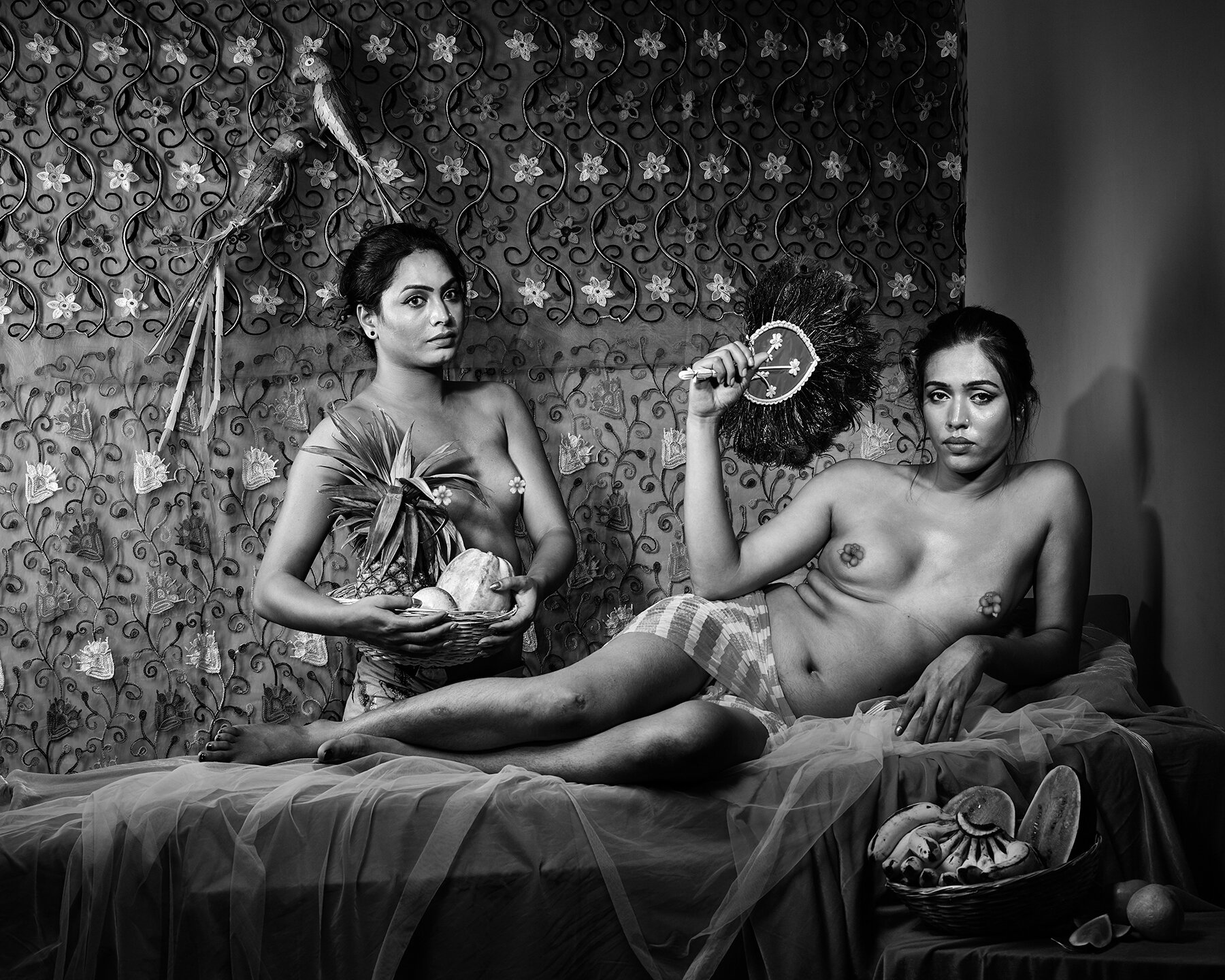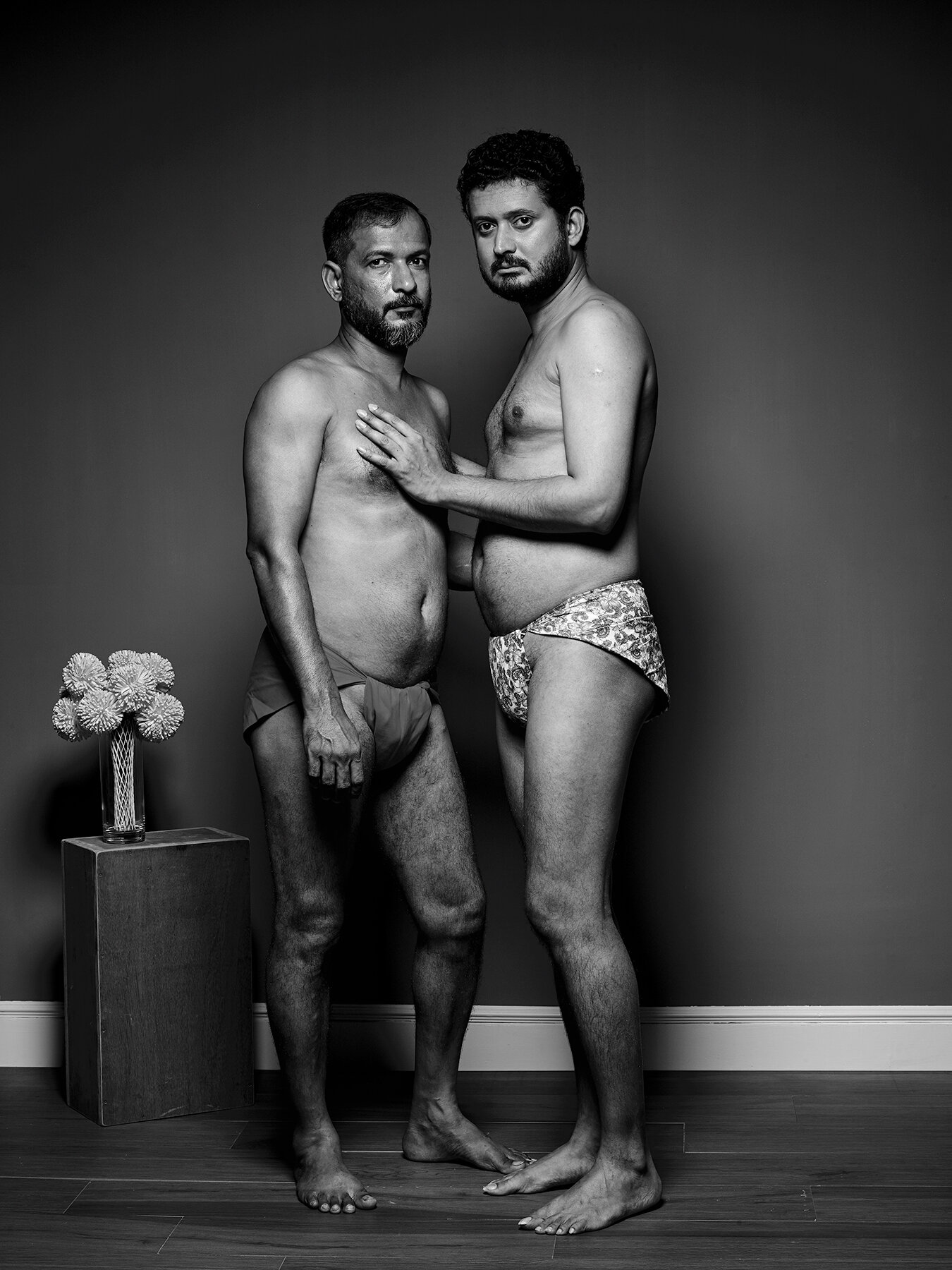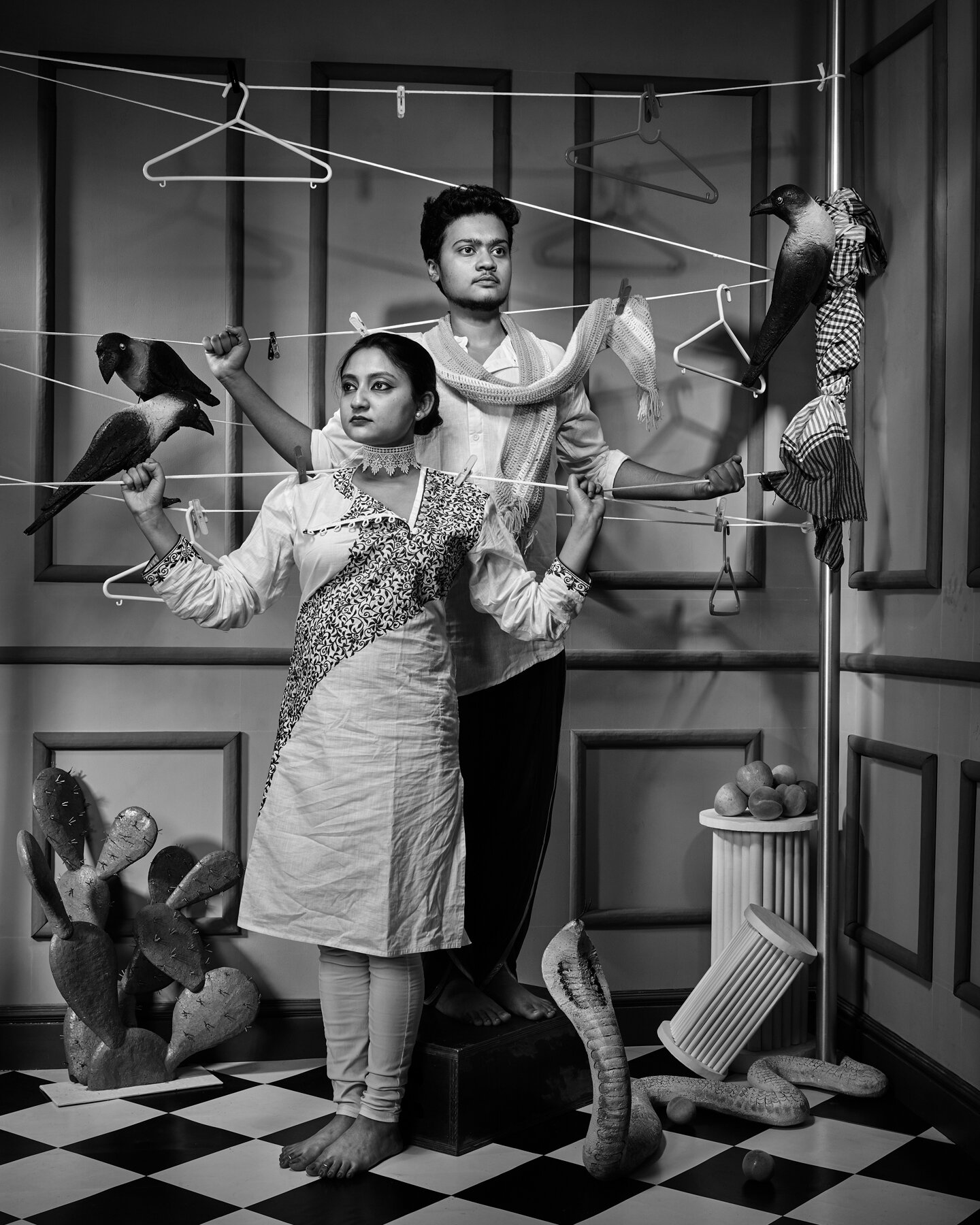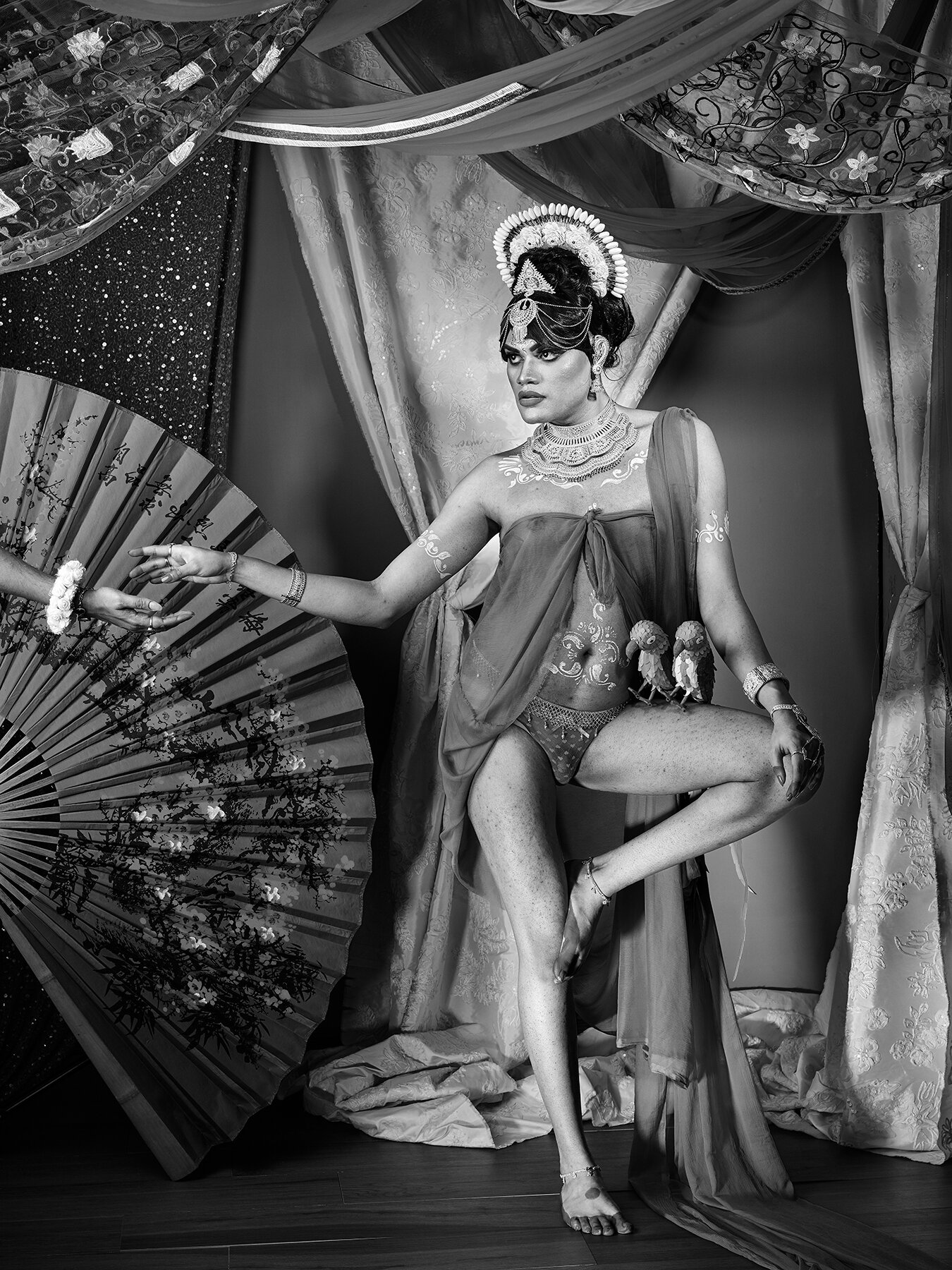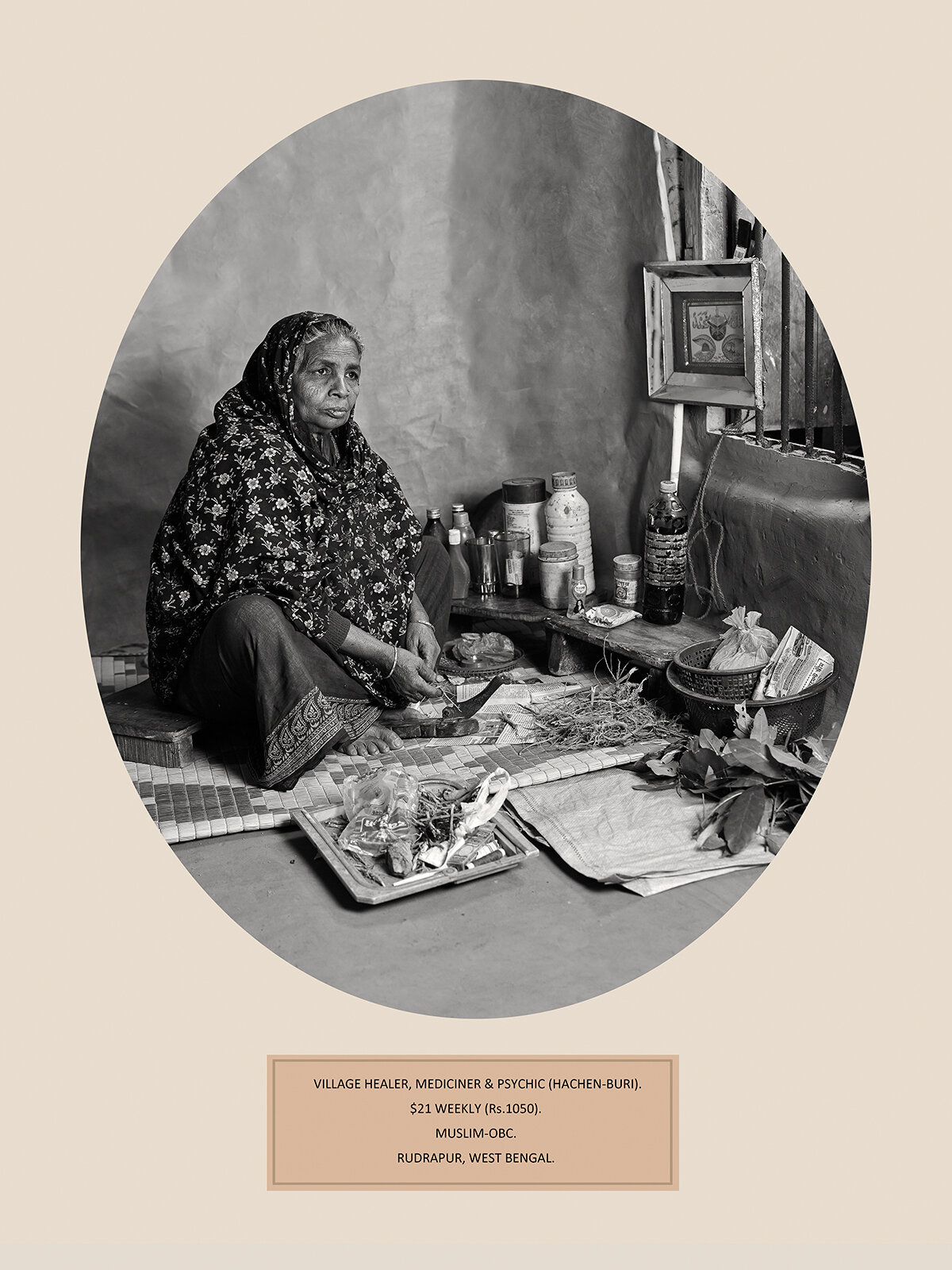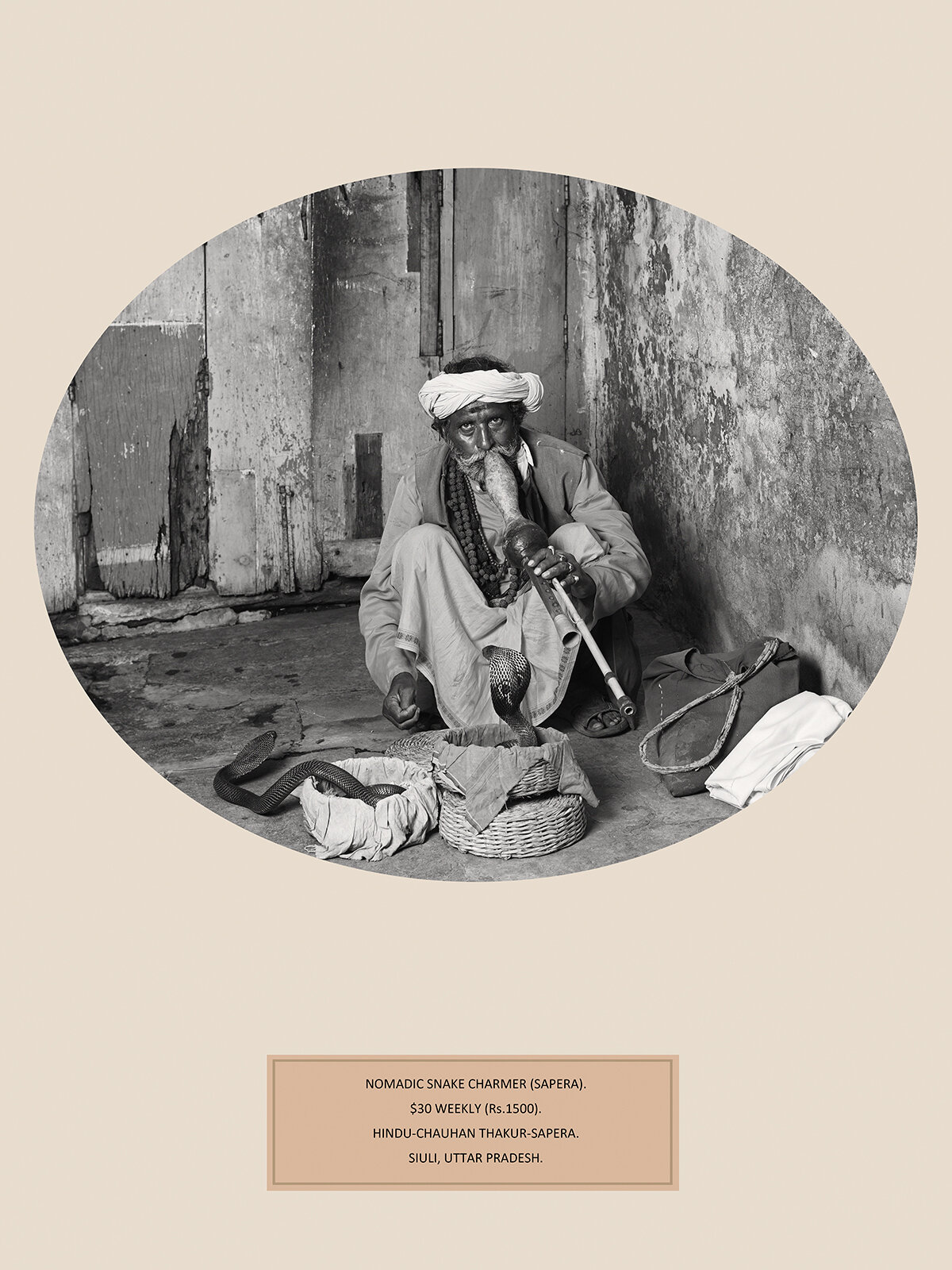Q&A: Suprnav Dash
By Hamidah Glasgow | April 24, 2021
Supranav Dash currently shuttles between his hometown Kolkata, India and New York City. His work examines the themes of identity, gender, sexuality, displacement, caste-class divide within the global socio-economic and political landscape.
Supranav is a 2016-17 Fellow in Photography from the New York Foundation for the Arts (NYFA). He is an EAW XXVI Alumni and was selected for the Aperture Summer Open '14 and American Photography 30. His recent exhibitions include the PhotoVogue 2019 Festival, Italy and The Serendipity Arts Festival, Goa, India; others include the PhotoVogue 2017 Festival, Milan, the Photoquai Biennial (PHQ5) at Musee du Quai Branly + Eiffel Tower, Paris; at the Noorderlicht Photo-Festival, Groningen and at Chobimela IX, Dhaka.
Dash's projects have featured in publications including Time Lightbox, The New Yorker, National Geographic, GEO, Wired, Huffington Post, Smithsonian, American Photo, Fast Company-Design, Lens Culture, SDN, Photographic Museum of Humanity, GUP magazine, Ojodepez magazine, DOC! magazine, PDN Edu, aCurator, Tasveer Journal, The Morning News, PetaPixel among others.
HG: Supranav, So great to catch up with you! You have had a fascinating life. So many great stories, and I'm sure you have so many more to tell. Let's talk about your trajectory as an artist/ photographer?
SD: Great to catch up with you too! My artistic journey started way back in the early nineties. Along with my high schooling, I did a diploma in Fine Arts (Painting) under maestro painter Ramananda Bandyopadhyay from the Bengal School of Art. I wasn't impressed with my proficiency and switched to commercial/ fashion photography in 1998 while fetching an undergrad degree in commerce. I applied to Brooks Institute in Santa Barbara, CA, and was keen to attend, but then 9/11 happened, which shelved my plans for the next five years. I ended up operating my own studio and successful business for ten plus years; until, in 2009, I let go of that career, moved to New York City, and enrolled in a BFA Photography (Honors) program at the School of Visual Arts. I was embracing social documentary work to contribute my remaining time in this world (along with my skillset) towards seeing positive social change. This was when I was introduced to the History of Photography and the History of Art in a formal setting.
In 2013, 'Marginal Trades' debuted in TIME Lightbox and exploded all over the world! (it was my graduating thesis that year as well) Then came a time when many photographers focussed on their backyard and were documenting marginalized something (which I really appreciate, the reason my artist statement has been up on my site since day one). I participated in group shows, won awards in portraiture, and got featured online, and it ended in just that... My career didn't take off!
I perched in New York City, right till September 2017 (off and on), putting so much in the line of fire, but couldn't manage to secure a single professional assignment. I saw other photographers being assigned to shoot marginalized trades assignments in Bengal and Bangladesh while I was in India... saw Irving Penn's work being revisited, deconstructed Studio portraiture and hand-painted backdrops being used in Annie Leibowitz's Pirelli calendar 2016, advertising commercials in India overusing my video portraits concept, and so on... yet still, I was under the radar.
After Trump's presence made life unbearable in NYC, I decided to put everything in storage and come back to India.
In November 2017, after my return to India, my first US magazine assignment arrived; it was a project super close to my heart and had a short turnout time. While on my way, due to inclement weather on the highway, I met with an accident and couldn't execute it. Travel abroad was restricted for almost six months. This is when I converted my drawing room into a makeshift studio and started photographing people from the LGBTQ community. These are performance portraits, where the subjects are performing for the camera for the world to see. Inclusivity, visibility, and empowerment of the Indian LGBT community is my goal here.
At the end of 2019, while residing in India, I completed my first portrait assignment from the New Yorker, followed in succession with another assignment from WIRED in March 2020, for which I was praised, and then Covid-19 took over the world...
HG: What prompted you to photograph the LGBTQ community? Especially if that isn't your community?
SD: Eros And Its Discontents explores the lives and desires of individuals in India's LGBTQIA+ community. These photos see struggles of identity, hopes and dreams, pleasure, pain, and rejection. The people in my images are treading a psychological minefield, and while undertaking this project, I've found much solace in the written works of Plato, Freud, and Jung. These fields are crisscrossed with complexities that arise out of a religious, conservative, and homophobic Indian culture that is quick to marginalize and discriminate. The project is witness to this subjugated community; they document the crest and trough of these lives.
Since my early 20's, outside of my college friends, I mostly interacted and befriended folks from the LGBTQ community. As I was part of the fashion scene in my city Kolkata, most people I came to know were queer people and those who studied the arts. Society, in general, were plainly divided into heteronormative people who believed in the institution of marriage, were conditioned to pursue engineering, medicine, and banking as their career choices, earn a decent salary, get married early, and have kids. Then, there were the 'others' who were artists and performers; they were seen as losers or on whom family/ society has given up hope and didn't care enough. Being a painter and a photographer, I became a part of the 'others' in a certain way.
My intention with 'Eros And Its Discontents' is to portray the stories of struggles of my close circle and friends alike, celebrating their lives and subverting societal challenges through visibility, inclusivity, and empowerment.
HG: Tell me about your earlier body of work, Marginal Trades.
Marginal Trades (2011-) documents the rapidly vanishing trades, businesses, and professions of India that are on the verge of extinction. Trades and professional practices have been intertwined with the Caste System in India. Each individual being stereotyped (using his caste and its subsets) follows their ancestral practice and weren't allowed to deviate else be outlawed by society. Thus, these professions passed down the generations from a father to his son until globalization, and rapid socio-economic change hit India, resulting in massive automation and social enculturation. As a photographer, I would like to recognize and remember the beauty of these analog practices and document as many tradesmen as possible for posterity's sake.
Marginal Trades was conceived in 2009 from a recollection of my childhood memory of my grandfather's with his barber Dani. It will be 10years this May since shooting my first installment of the Tradesmen. Deconstructing the concept of the 'Post-colonial Photo Studio' and drawing inspirations from the Indian ethnographic works of Sir John F. Watson and John W. Kaye, the Small Trades by Irving Penn and Le Petit Métiers by Eugene Atget, and of course August Sanders.
'Marginal Trades' debuted in TIME Lightbox (2013) and exploded all over the world! It helped me get into group shows, win awards for portraiture, and get more features online... but that was it! On the home front, the project was never touched by mainstream Indian media, possibly fearing that the world might judge India as a backward nation... Only recently, it was a part of the Serendipity Arts Festival (2019), Goa.
HG: What do the "economic restraints of middle-class life" look like from your experience?
SD: Not being able to live life to its fullest is something we associate with the first world. Here the mantra is 'survival'; from morning to evening, the middle-class toils to put decent food on the table. They can plan on one or two outings a year. Why India is not producing enough artists, even though we have so much potential trapped in its middle class, is because most of the population is not free from the clutches of the 'economic restraints of middle-class life. Governments came and went, no grants at the state levels, encouragements in school, supports from society existed in our time. Recently, since our society is moving from a socialist mindset to a capitalistic one, we are seeing a boom in the television and film industry who are seen showcasing and mentoring young talents. So much of the fine arts are still untouched!
My biggest struggle was overcoming societal pressure to follow the norm and achieving that economic threshold so I could take off to follow my dream...
HG: You've lived in the States; what is your perception of how LGBTQ people are treated here compared to Kolkata? ( I know that this is a general question, but perhaps a broad sweep answer will give some perspective)
SD: The majority of rural India comprises a religious, conservative, and homophobic culture that is quick to marginalize and discriminate against the LGBTQIA+ community. Exceptions may be found among the progressive upper-class urban dwellers and people from the fashion, films, and the creative arts industry who heavily rely on the talent from the LGBT community. It's hard to complete school as a queer person in India, get a college education, or a good job. And worse, many who are openly queer express feelings of guilt caused by embarrassment to parents and siblings. Fearing social boycott, many gay and bisexual people will suppress the truth and live lives lying to themselves and those they love. Stigmatization, retribution, and treating the LGBT members as 'invisible' or as 'the others' is a common phenomenon. The ability to choose a partner of the same gender, trying to align with a gender of their choice, express one's sexual preference, and lead a life on one's own terms has been the primary struggle.
I'm sure it's very difficult for an LGBTQ person, even in the States, to navigate society and lead a normal life. We know their experience can never be the same as that of a Cis-gendered person, no matter where on earth they are. But since the level of awareness is high and human rights are more respected and safeguarded in the States, life surely is a tad smoother than that of India. While Amsterdam is on the other extreme, I would use New York City as my healthy in-between to measure the contrasts in treatment an LGBTQ person receives here compared to that in Kolkata, reminding us of how far we still have to go.
HG: In the Eros work, there is a complex layering of the setting that surrounds your subjects. The clothing is elaborate, and the performance elegant. How do the scenes get set? Are you directing their creation, or is it a collaboration with the sitters/performers?
SD: Every single portrait is a form of collaboration between my subject and myself. When introduced to someone new, I share the images that I have previously shot with other subjects (or they go check out my social media), and I patiently answer questions they might have. Often, I visit their social profiles; if something catches my attention and I feel it addresses our common goals, I suggest so. We hone in on an aspect of performance that is executable, that the subject feels comfortable in showcasing, we go ahead with the layout and securing the props.
I’m assisted by my engineer friend Sujoy who takes care of the creative direction, my electrician friend who I taught lighting and takes care of that department; Dibakar makes the props, my friend Tanmoy, who is my liaison and media manager and with frequent participation by my fashion designer/ stylist friend Tejas. Not to forget a host of freelance makeup artists who participate regularly.
Expanding on my love for Irving Penn’s work and taking off where I left with the ‘Marginal Trades,’ I pre-visualized shooting this chapter of the ‘Eros’ work between two walls and in black and white. It put us in a box; I guess I do this with every project of mine; it’s a hit-or-a-miss and no money shots involved. Peter Hujar’s sensitive work resonates deeply within me; by wanting to expand on it, I’m reminding myself and our viewers how far the community has come from the days of the 90’s AIDS epidemic. Initially, in 2017, I thought of revisiting his work and shoot a chapter among my friends in Brooklyn and then follow up with the Kolkata chapter.
HG: To a Western audience unfamiliar with some of the cultural/religious messages, what do we need to know? Or, what would you have us know?
SD: The sages and mystics codified our cutting-edge quantum Energy science and transferred it down the generations by the word of mouth. These codes were supposed to be abided by humanity and practiced in everyday life; slowly, they became what we know as our culture. This is known as ‘Sanatana Dharma,’ which is about universal unity and acceptance, and from which arose all the major Hindu religions. The Ancient Hindus had no problem with homosexuality; some of India’s best ancient art depicts homoeroticism. We have worshipped the natural elements as Gods. Some of them are amongst the most highly respected figures in Hindu mythology and are believed to have had same-sex partnered activities. However, six centuries of Islamic rule, followed by nearly two centuries of British imperialism, separate modern Hindus from their ancient forefathers. Today’s Hindus are characterized by a strong antagonism towards the LGBTQ community.
Using inspirations from Indian mythology, cave Frescoes, the Epic Mahabharata, Bengali folklore, to the works of Rabindranath Tagore and film director Rituparno Ghosh, I’d like to incorporate anything that may be used to expand the mindset of our present Indian population and the world in general and to remind them who we were before. The props are mainly used as signifiers to either depict an idea or to hint at something that cannot be translated within a single frame.
HG: Congratulations on the compelling work. What is next for you?
SD: Thank you kindly. Living in the scary now and emerging on the other side is the main priority. Stuck between two worlds - a New York City that is fast-paced, cut-throat hustles, and capitalistic in nature and, on the other hand, my hometown Kolkata, which is laid back, socialist, silly, and stuck, and idealistic. I'm born in a Hindu Vaishnava family, raised in a liberal mindset, went to Irish Catholic schools, and practicing Pranic Healing (Vajrayana Buddhism) for self-realization and helping my fellow sentient beings.
I want a solo exhibition, gallery representation, proper recognition, and dissemination of the works in my homeland where and for whom they are being made. Also, I wouldn't mind getting some paid work to sustain myself.
HG: Thank you!
SD: Thank you!
All images © Supranav Dash




